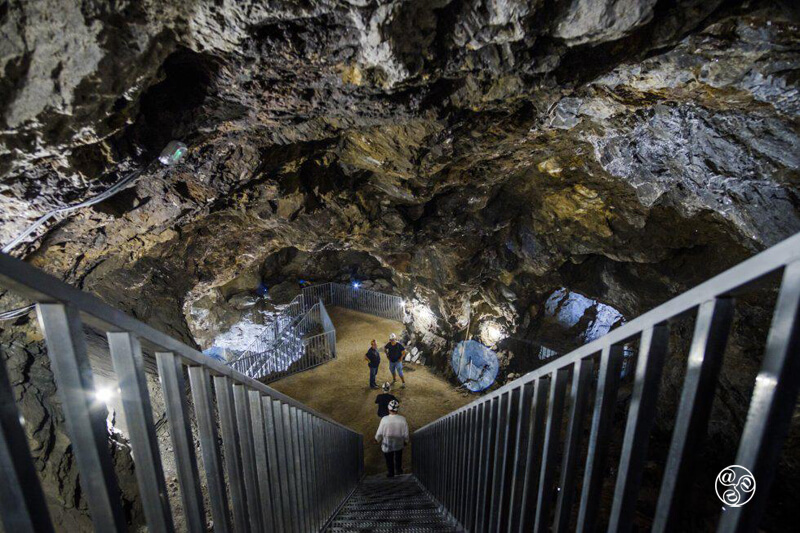
Giant Geode © Geoda de Pulpí |
|
PULPI GEODE OR GIANT GEODE
The Pulpí Geode, also known as the Giant Geode, is the one of the largest crystal caves ever found, and is the largest accessible geode in the world.
The geological phenomenon is located in Mina Rica, an abandoned silver mine near Pulpí on the northern Almeria coast. Discovered in 1999 by members of the Mineralogist Group of Madrid, it opened to the public in August 2019.
A geode is a void formed from an air bubble inside volcanic, metamorphic or sedimentary rock. It is filled with crystals formed from mineral deposits.
The Giant Geode measures 8 metres long by 2 metres high, and is covered with huge translucent gypsum crystals up to 2 metres in length. The transparency, size and state of preservation of this geode make it unique.

The Pulpí Geode was formed in two different phases, starting six million years ago. The hollow in the rock was produced by the karstification (dissolution of soluble rock) of the dolomites that formed the Sierra del Aguilón, a 500-metre-high mountain range between Pulpi and the coast, as well as by hydrothermal volcanic injections (water heated by volcanic activity). The mineral deposit in the geode might have been formed by a karst-hydrothermal process (gypsum and calcite reacting with hot water).
The Mina Rica has other interesting geological aspects besides the Giant Geode of Pulpí and the mineralogy: foldings (curved or bent rock), mylonites (metamorphic rock), fault surfaces; formations such as speleothems (mineral deposits) of epsomites (magnesium sulphate, same as Epsom Salt) and calcites (carbonate minerals); neoformation of minerals such as "gypsum beards"; and mineralized reefs of siderite (iron carbonate).
In addition to the Giant Geode, other geodes of varying sizes can be seen in the mine, such as the Geoda Partida and the Geoda de Gollas de Golondrina.

The Sierra del Aguilón has been subject to mining exploitation throughout history. Contemporary mining began in 1840, with the use of trenches and cuts into silver galena (lead sulphide).
After 1870, iron extraction started, which led the area of Pilar de Jaravia, a neighbourhood of Pulpí, to become one of the most prosperous mining districts in Spain.
In the last decade of the 19th century, the Marín Menu family revitalized the iron works of the Quien Tal Pensara Mine ("Who would have thought it", another name for Mina Rica), which remained in operation for several decades, until the Civil War. Afterwards the premises were abandoned.
Twenty years after its discovery, the project to reopen the Mina Rica began, and now everyone can enjoy this extraordinary natural wonder.
To protect the crystals from deterioration, a special system devised by Almeria University monitors visitor numbers, as well as controlling the temperature, humidity and CO2 levels.

ADMISSION
€ 22 Adults.
€ 10 Children from 8 to 16 years old (accompanied by an adult).
€ 15 Special rate for retirees, large families, people with a disability (more than 33% recognised).
€ 225 Groups of 15 people.
RESERVATIONS
Hotels in Pulpi
Book Hotels in Pulpi
LOCATION
The Geode is located in the “Mina Rica”, in “El Pilar de Jaravia” neighbourhood, Pulpi (Almería). Address: Poligono S-AG2A 33, 14640 Pulpí.